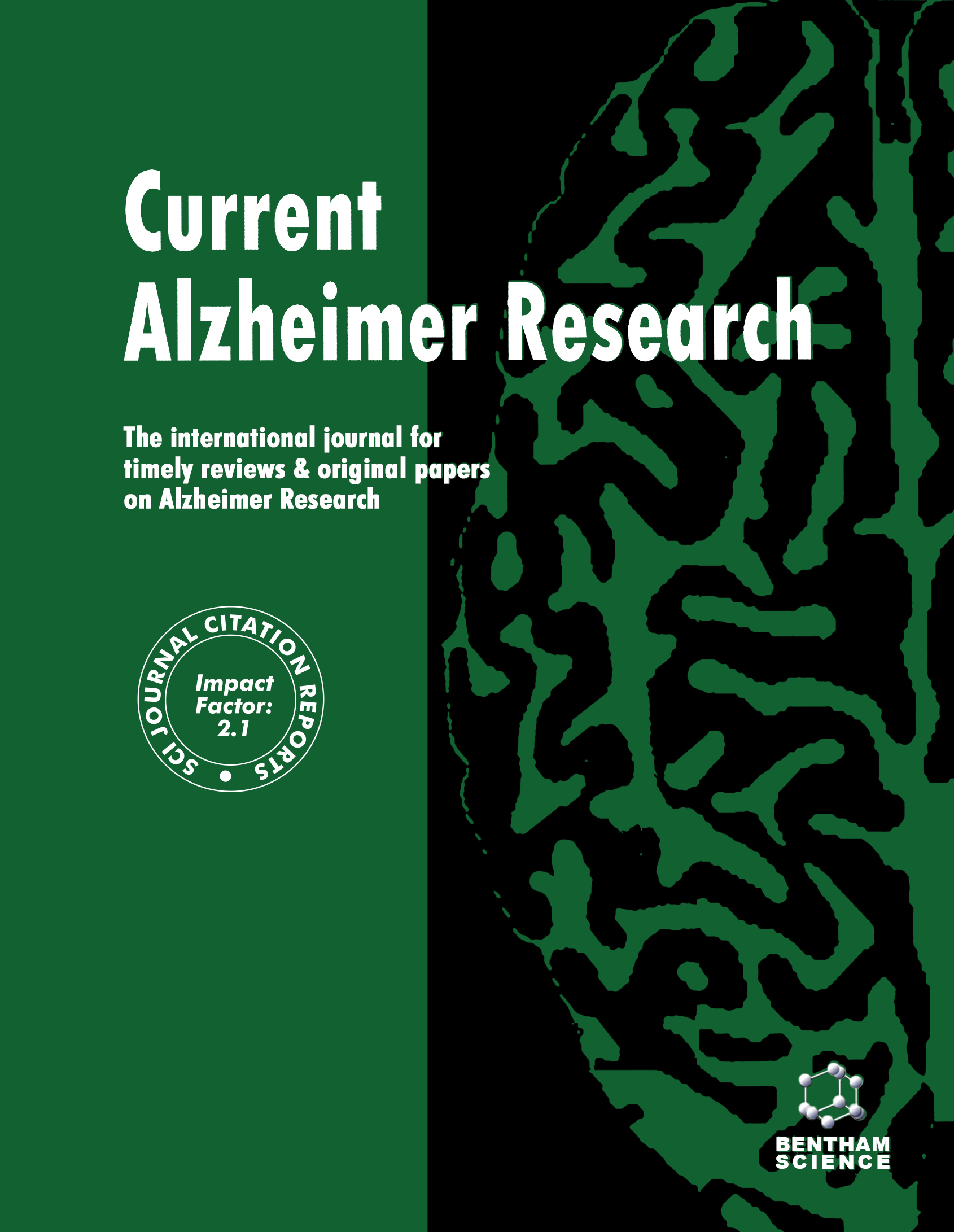- Home
- A-Z Publications
- Current Alzheimer Research
- Issue Home
Current Alzheimer Research - Current Issue
Volume 21, Issue 9, 2024
-
-
Mitochondrial Fragmentation as a Key Driver of Neurodegenerative Disease
More LessAuthors: Alina Chaplygina and Daria ZhdanovaMitochondrial form and function are intricately linked through dynamic processes of fusion and fission, and disruptions in these processes are key drivers of neurodegenerative diseases, like Alzheimer’s. The inability of mitochondria to transition between their dynamic forms is a critical factor in the development of pathological states. In this paper, we focus on the importance of different types of mitochondrial phenotypes in nerv Read More
-
-
-
Extracellular Vesicles: A Promising Therapeutic Approach to Alzheimer's Disease
More LessExtracellular vesicles (EVs) are nano-sized membranous particles that are secreted by various cell types and play a critical role in intercellular communication. Their unique properties and remarkable ability to deliver bioactive cargo to target cells have made them promising tools in the treatment of various diseases, including Alzheimer's disease (AD). AD is a devastating neurodegenerative disease characterized by prog Read More
-
-
-
Comprehensive Insights into Pathophysiology of Alzheimer's Disease: Herbal Approaches for Mitigating Neurodegeneration
More LessAuthors: Debasis Sen, Sunny Rathee, Vishal Pandey, Sanjay K. Jain and Umesh K. PatilAlzheimer's disease (AD) is a progressive neurodegenerative disorder characterized by cognitive decline, memory loss, and functional impairment. Despite extensive research, the exact etiology remains elusive. This review explores the multifaceted pathophysiology of AD, focusing on key hypotheses such as the cholinergic hypothesis, hyperphosphorylated Tau Protein and Amyloid β hypothesis, oxidative stress hypothesis, Read More
-
-
-
Visualization Analysis of Tau Protein in the Brain of Alzheimer’s Disease: A Scoping Literature Review
More LessAuthors: Dan-qi Zhang, Xu Yang, Han-bin Niu, Xu-chen Sun, Dan-na Cao, Ang Li, Jin-huan Yue, Xiao-ling Li and Qin-hong ZhangIntroductionThis study analyzed the current status, hotspots, and development trends of tau protein research in Alzheimer’s disease (AD) and to provide a reference for future research in this field. CiteSpace software was used to scientifically measure and visualize the relevant articles in the field of tau protein in AD brain from the Web of Science Core Collection database from 1991 to 2022.MethodsA total of 568 articles were Read More
-
-
-
Comprehensive Investigation of Natural Ligands as Inhibitors of β Secretase to Identify Alzheimer’s Disease Therapeutics
More LessAuthors: Shikha Kushwah and Ashutosh ManiIntroductionAlzheimer's disease (AD) is an alarmingly prevalent worldwide neurological disorder that affects millions of people and has severe effects on cognitive functions. The amyloid hypothesis, which links AD to Aβ (amyloid beta) plaque aggregation, is a well-acknowledged theory. The β-secretase (BACE1) is the main cause of Aβ production, which makes it a possible target for therapy. FDA-approved therapies for AD do Read More
-
-
-
Associations Between Metabolomics Findings and Brain Hypometabolism in Mild Cognitive Impairment and Alzheimer’s Disease#
More LessBackgroundAlzheimer's disease (AD) is a progressive neurodegenerative disease with rising prevalence due to the aging global population. Existing methods for diagnosing AD are struggling to detect the condition in its earliest and most treatable stages. One early indicator of AD is a substantial decrease in the brain’s glucose metabolism. Metabolomics can detect disturbances in biofluids, which may be advantageous for early de Read More
-
Volumes & issues
-
Volume 21 (2024)
-
Volume 20 (2023)
-
Volume 19 (2022)
-
Volume 18 (2021)
-
Volume 17 (2020)
-
Volume 16 (2019)
-
Volume 15 (2018)
-
Volume 14 (2017)
-
Volume 13 (2016)
-
Volume 12 (2015)
-
Volume 11 (2014)
-
Volume 10 (2013)
-
Volume 9 (2012)
-
Volume 8 (2011)
-
Volume 7 (2010)
-
Volume 6 (2009)
-
Volume 5 (2008)
-
Volume 4 (2007)
-
Volume 3 (2006)
-
Volume 2 (2005)
-
Volume 1 (2004)
Most Read This Month Most Read RSS feed
Article
content/journals/car
Journal
10
5
false
en

Most Cited Most Cited RSS feed
-
-
Cognitive Reserve in Aging
Authors: A. M. Tucker and Y. Stern
-
- More Less

